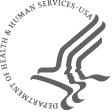Clinical Neuroplasticity and Neurotransmitters Study Section – CNNT

The Clinical Neuroplasticity and Neurotransmitters Study Section or CNNT reviews applications which use experimental in vitro, small animal and non-human primate models to understand the mechanisms of epilepsy, spinal cord injury and neurodegeneration including peripheral neuropathies, Parkinson’s disease (PD), dystonia, and amyotrophic lateral sclerosis (ALS).
The List of Reviewers lists all present, whether standing members or temporary, to provide the full scope of expertise present on that date. Lists are posted 30 days before the meeting and are tentative, pending any last minute changes.
Review Dates
Topics
- Development of an understanding of basic mechanisms/pathologies of epilepsy, epileptogenesis, spinal cord injury, Parkinson’s disease neurodegeneration and neuropathy using rodent and non-human primate models. Epigenetic processes dictating changes in neurogenesis and changes in connectivity following excitation inhibition imbalances are reviewed here. CNNT will also review some computer modeling methodologies to evaluate synaptic connectivity changes relating to epilepsy, spinal cord injury and Parkinson’s disease.
- Evaluation of the alteration synaptic functions, plasticity and adult neurogenesis in the above-mentioned disease models using anatomical, electrophysiological and optogenetic technologies.
- Translational pharmacologic approaches to epilepsy, spinal cord injury and Parkinson’s disease. The effects of long-term drug administration on CNS activity and structure (e.g., L-DOPA). The development of stem cell lines and viral vectors for gene therapy approaches in context of repair and regeneration following Spinal Cord Injury and Epilepsy
- Changes in signal transduction pathways that accompany long term changes of excitatory and inhibitory cellular and network activity in spinal cord injury, epilepsy and Parkinson’s disease
- Applications leading to the understanding of molecular changes in AMPA, GABA, NMDA and GLUR receptors in injury and alterations of excitation and inhibition.
- Small animal imaging techniques MRI, DTI, MRS to follow connectivity and tracking stem cell transplants.
Shared Interests and Overlaps
Sensory-Motor Neuroscience study section and CNNT have shared interests in motor systems. SMN reviews applications on the anatomical and functional neurobiology of motor, sensorimotor, vestibular, and somatosensory systems across the lifespan and in aging while applications addressing spinal cord pathology, regeneration, or repair in animal models are reviewed in CNNT.
Neurodifferentiation, Plasticity, Regeneration and Rhythmicity Study section and CNNT have shared interests in synaptic plasticity and regeneration. Applications with a translational focus are reviewed in CNNT while applications focused on basic cellular and molecular mechanisms of synaptogenesis, plasticity and regeneration may be reviewed in NDPR.
Molecular and Cellular Neuropharmacology study section and CNNT have shared interests in circuit analysis. Circuit analysis applications focused on addiction, stress and neuropsychiatric disorders at the cellular and molecular level are reviewed in MCNP while those focused on epilepsy, spinal cord injury, neuropathy or Parkinson’s disease are reviewed in CNNT.
Developmental Brain Disorder study section and CNNT have shared interests in animal models related to seizures/epilepsy. Applications that emphasize developmental aspects of seizures/epilepsy are reviewed in DBD while vertebrate animal applications related to adult epilepsy are reviewed in CNNT.
Neuronal Communications study section and CNNT have shared interests in relation to synaptic plasticity. NC reviews applications that emphasize on fundamental cellular and molecular mechanisms of neuronal communication and synaptic plasticity including those relevant to disease processes including CNS and PNS disorders. CNNT reviews applications with a translational and/or clinical focus.
Chronic Dysfunction and Integrative Neurodegeneration study section and CNNT have shared interests in animal studies of neurodegenerative diseases. While CDIN evaluates the integrative pre-clinical studies on functional and physiological consequences of neurodegenerative diseases at combined levels of brain pathologies, neuronal activities and cognition, CNNT reviews in vitro ex vivo, and animal models focusing on synaptic and brain circuitry activities in neurodegenerative diseases using electrophysiology and related approaches.
Neural Oxidative Metabolism, Mitochondria and Cell Death Study section and CNNT have shared interests in neuronal cell death and protection using vertebrate animal and cellular models. NOMD reviews applications investigating molecular mechanisms underlying neural injury in neurodegenerative disorders. CNNT reviews applications with an anatomical, electrophysiological, or pharmacologic approach in these diseases.
Neurogenesis and Cell Fate Study Section reviews applications that emphasize on cellular and molecular aspects of neurogenesis and neural stem cell, while applications that focus on neurogenesis in context of repair and regeneration with respect to SCI and epilepsy come to CNNT.

